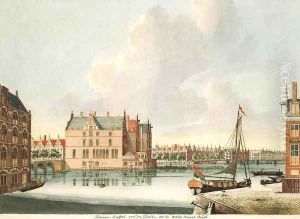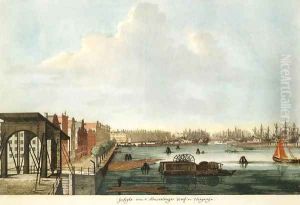Johannes Teyler Paintings
Johannes Teyler was a Dutch engineer, mathematician, and artist, born in 1648 in Nijmegen, Netherlands. His contributions spanned across various disciplines, but he is most renowned for his pioneering work in the field of printmaking, particularly in the development of color printing techniques during the Golden Age of Dutch art. Teyler's academic background laid the foundation for his innovative approaches to art and science. He studied philosophy and mathematics at the University of Leiden, where he was influenced by the intellectual climate of the time, characterized by advancements in science and exploration of new ideas in art and technology.
After completing his studies, Teyler focused on the practical application of his knowledge in engineering and mathematics, but his enduring legacy is most evident in his artistic pursuits. He invented a new method of printing in color, which was a significant departure from the traditional black and white etchings and engravings prevalent in the 17th century. Teyler's technique involved using several etched plates, each inked with different colors, to produce a single print. This method allowed for a more nuanced and vibrant use of color in prints, opening up new possibilities for artists and printmakers.
Though Teyler was not the only artist experimenting with color printing during his time, his contributions were notable for their technical innovation and the influence they had on subsequent generations of artists. His work in color printmaking was a precursor to more sophisticated techniques that would develop in the centuries to follow, bridging the gap between the traditional engraving methods of his time and the modern color printing processes.
Johannes Teyler died in 1709, but his legacy lived on through his prints and the techniques he developed, which continued to influence the art of printmaking. His work is a testament to the interplay between art and science, and his innovative spirit exemplifies the inventive curiosity of the Dutch Golden Age. Today, Teyler's prints are valued not only for their historical significance but also for their beauty and the technical skill they demonstrate.

